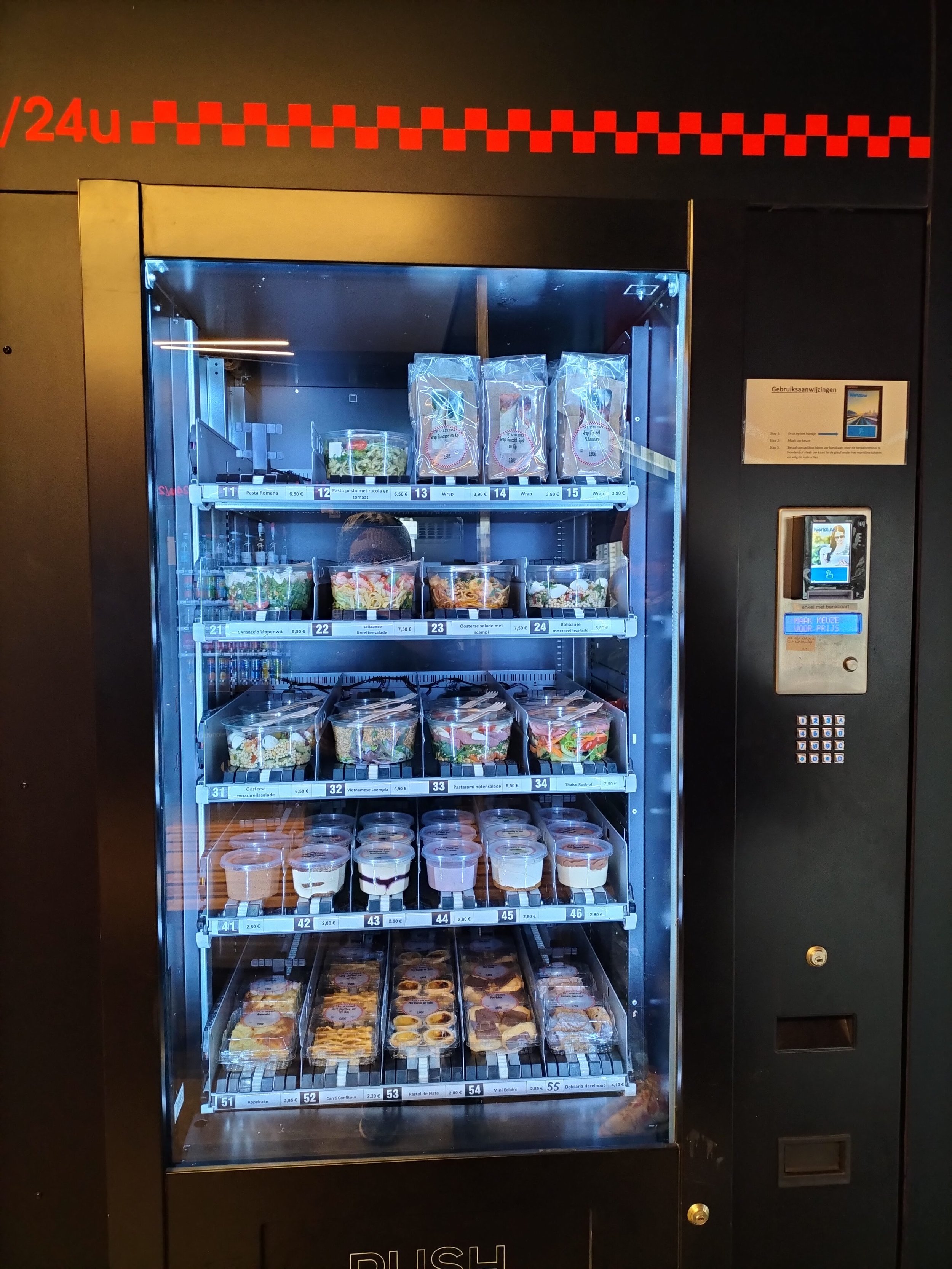In 2022, the website TasteAtlas published their annual ‘World’s Best Cuisine’ awards. The award involved ranking 95 world cuisines according to audience votes for ingredients, dishes and beverages, and its methodology and subjectivity were thus somewhat questionable. Perhaps unsurprisingly, Italian, Greek, Spanish, Japanese and Indian cuisines topped the rankings, and so the media were less interested in these predictable front-runners than in the cuisine with the dubious honour of coming bottom of the list: Norway.
Forbes published an article simply titled, ‘Is Norway’s cuisine really so bad?’ The subreddit r/Norway posted a link to the piece, garnering (at the time of writing) 295 comments. Most interesting, to my mind, was the reaction from Norwegians themselves, or from those who call the country home. ‘Does Norwegian food deserve to be ranked the worst in the world?’ asked Anglophone Norwegian news website TheLocal.no. It quoted chef Filip August Bendi, soon to compete among the world’s culinary elite for the Bocuse d’Or, who condemned the ranking as ‘completely unfair’. The article noted that Norway can claim the highest number of prestigious Bocuse d’Or awards in the world, with its chefs often scoring highly in European and World chef championships, and that ‘there are many Michelin-starred or recognised restaurants in Norway’, including the three-starred Maaemo in Oslo.
Citing the fact that the Grandiosa frozen pizza is considered to be Norway’s unofficial national dish, the Forbes article pointed out that ‘there remains a clear gap between the blossoming fine dining scene and the everyday food eaten by most Norwegians and visitors to the country’. They might also have considered another curious Norwegian preference: ‘Taco Fridays’, in which cheap beef mince is mixed with packet spices and shoved inside a supermarket crispy taco shell with some shredded lettuce, a tradition treated with borderline religious reverence. Or what I think of as Norway’s alternative ‘national dish’: the matpakke, or packed lunch, which predominantly comprises some kind of processed fish or cheese paste squeezed out of a tube onto a piece of knaekkebrod (crispy rye bread), and whose bland uniformity actually led the BBC to write an article declaring that ‘In Norway, you’re not supposed to look forward to your lunch’. For more anecdotal evidence, I might add the fact that I once saw a colleague tip some dry oats into a shallow soup bowl, add a splash of water from the hot water tap, and take that into a meeting for lunch; or the fact that the customary time to hold meetings in my Norwegian workplace was from 12 to 2pm, and that no one but me ever seemed to take food to these meetings.
But this is not a Norway-bashing rant (I’ve already done that, anyway, here; moreover, I would like to acknowledge that Norway produces excellent waffles, fine berries, and some very good lamb). What I want to think about is how we (at least in Western Europe; I acknowledge that this is a very situated and biased look at the matter) take the true measure of a cuisine or food culture: where we might go to gather the evidence that will enable us to make some kind of value judgement on the relative rankings of world cuisines. Such judgements will always be, of course, subjective, but one cannot deny that your average city is far more likely to contain an Italian restaurant than an Icelandic one, or that your average northern European is more likely to be able to reel off a list of notable Indian dishes than specialities from, for example, Latvia.
It’s not just familiarity, though: certain countries also possess a reputation for enshrining food at their very core. There is a reason that Italians often make headlines with their outrage over the apparent bastardisation of their beloved cuisine by clueless foreigners (in fact, there’s even a Facebook group, ‘Italians Mad At Food’): a perceived assault on food is an assault on the very heart of the nation itself. France, of course, with its long history of culinary extravagance and exactingness, and its boulangerie on every corner, is widely held up as a kind of gold standard for food - almost literally, in the shape of the coveted Bocuse d’Or. In several East Asian countries, a phrase akin to ‘Have you eaten yet?’, or, sometimes, ‘Have you eaten rice yet?’ is, under certain circumstances, used as a greeting in the same fashion in which we might say ‘How are you?’
In my mind, there is no strange discrepancy between the amount of Michelin stars and Bocuse d’Or awards held by Norwegian chefs, and the country’s pitiful ranking on the list of world cuisines, because they are completely different entities. In fact, I would go so far as to argue that fine dining restaurants are not a true reflection of a country’s food culture or standard of culinary excellence. Yes, the exceptional ones - in Scandinavia, Noma springs to mind - make use of fine local produce and call attention to localised techniques of cooking, fermentation and preservation, but the concentration of Michelin stars in a country is not indicative of the beating heart of that country’s food culture - as Noma’s prices, notorious waiting lists and forthcoming closure will attest. Fine dining restaurants can be found the world over. You could visit Norway and eat in fine dining restaurants every night of your visit, but this would hardly be reflective of the country’s food culture. This is arguably even more pronounced when visiting countries where Michelin-starred restaurants are unaffordable for the majority of people.
No big deal, just a normal jar of pesto on a normal Norwegian supermarket shelf costing €53/£46/$57
More reflective might be what your average worker takes in his or her matpakke; what children are fed at school (my friends, who had raised their four-year-old in Finland, were horrified to discover that porridge with jam passed for ‘lunch’ at his Norwegian kindergarten); the average lunch or snack options available at the train station or corner shop. You might also pay attention to the level of choice and accessibility of quality ingredients in the supermarkets. It’s no secret that Norway is notorious for its expensive groceries and high prices. As a Redditor pointed out in response to the country’s TasteAtlas ranking, ‘we have been quite poor to make good use of our resources. Considering all the wild life and fish we have, it’s surprising how taco, kebab and pizza is the shit among people. We seriously need a food revolution here’. Such an observation would also remind us that it’s not necessarily the quality of local ingredients that defines and bolsters a national food culture, but how accessible those ingredients are to the masses - not just the top chefs - and whether those masses actually use them. This is also true of small food businesses: two of my favourite eateries in Oslo and Aarhus, both of which offered much more interesting and high-quality food than elsewhere in the cities (one was a vegetarian Mexican restaurant, the other an Australian micro-bakery and brunch spot that made the best banana bread I have ever tried), closed after a couple of years, declaring sadly that people just weren’t ready for what they wanted to provide.
I’ve yet to receive a coffee in Belgium that wasn’t accompanied by some tiny sweet morsel
I’ve thought about this a lot, ever since I moved from Norway to Belgium, and felt a warm kind of reassurance: I was back in a country where people value their food. No more meetings scheduled at lunch time. No sitting eating alone in a deserted, sterile space curiously and paradoxically designated both møterom (meeting room) and pauserom (break room): instead, a work kitchen always home to someone enjoying a meal or drink of some kind, and frequently to piles of home-baked delicacies from generous colleagues. A country where it is seemingly impossible to eat in public without someone wishing you ‘smakelijk!’ (the Flemish equivalent of bon appetit), whether a train ticket inspector or a random man on a Brussels station platform. The amazing phenomenon of the broodautomat, a vending machine for bread, so that people have 24/7 access to a fresh loaf, and even the Neuhaus chocolatautomat at Ghent station, so you can pick up your emergency box of beautifully-wrapped pralines in a hurry. Ordering a coffee and always receiving a small square of chocolate or a speculoos biscuit on the side. Work lunches that do not constitute a fridge-cold, somewhat chewy sandwich, but instead involve three courses and a glass of wine at a restaurant. A constant stream of cakes and pastries, whether in the communal kitchen at work or proffered from a tupperware at the end of a boxing class by the guy who loves to bake.
I’ve had the same feeling wandering cities where street food is a vital part of the urban fabric, where the goings-on of everyday life are glimpsed through a haze of smoke and steam, scented with the tang of charring meat or the cosseting perfume of spiced tea. In such places, I adjust my eating habits and appetite accordingly, grazing on sumptuous morsels grabbed from street corners throughout the day rather than sitting down for a full meal that would waste valuable stomach space. I think often about train rides through India and Myanmar, where vendors at every station would bring baskets of hot, fresh snacks and vats of steaming sweet tea, ensuring that you’d reach your destination nourished in a way that a sad cold sandwich from a convenience store could never achieve. I think about countries where fresh produce practically spills out of markets onto the streets, where locals poke and prod at trays of tomatoes and melons, sniff honeyed mangoes and assess the fresh snap of leafy greens; where herbs are sold in bunches with the heft of a horse’s tail and fish flail around in buckets on the floor. I think of sun-drenched lunches on Greek islands, where ice-cold raki and watermelon are an unspoken part of the deal without ever being ordered or paid for. I think of the Syrians who thrust searing falafel, swollen figs and sticky dates into my eager hands as I wandered the market in Aleppo, so proud were they of their wares. I think of the Indian family who turned me into human foie gras, following up lavish five-course breakfasts with immediate trips to the city for sweets and roti, because ‘if she doesn’t put on five kilos in India, when will she?!’
Chai served streetside in India
The nuance of this, of course, will be lost in any ‘World’s Best Cuisine’ awards, or the number of Michelin stars arbitrarily allocated to a country. The way in which food irrigates a nation, seeps into its very fabric and floods the veins of its people is altogether more subtle. It becomes part of the rhythms of life, enshrined in the language: a bedrock of metaphor upon which to build a community united by the hedonistic pleasures of passionate consumption. We don’t need to take the pulses of these food cultures: their beating hearts are worn on their sleeves for all to see, taste, and enjoy.




